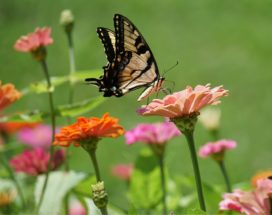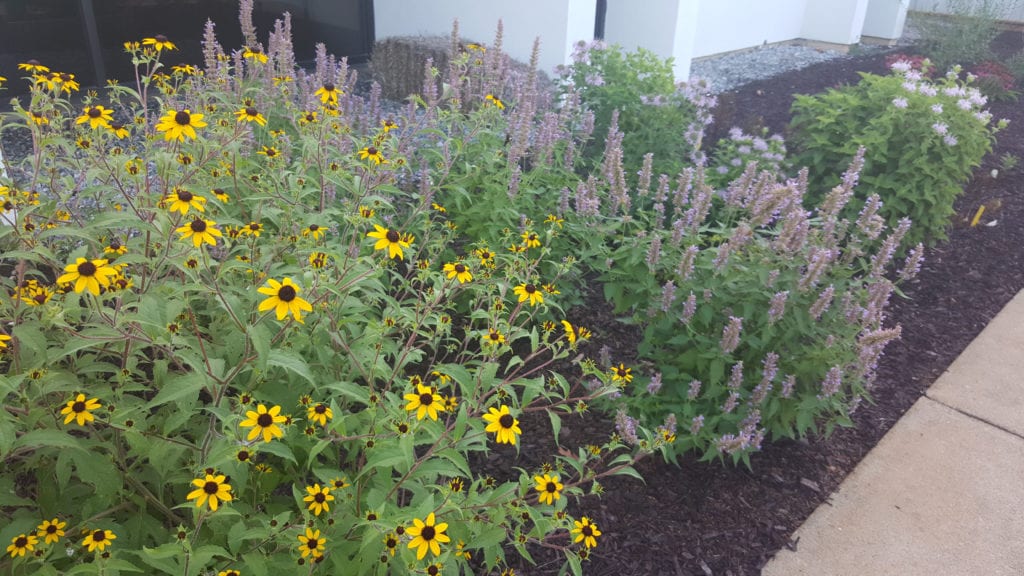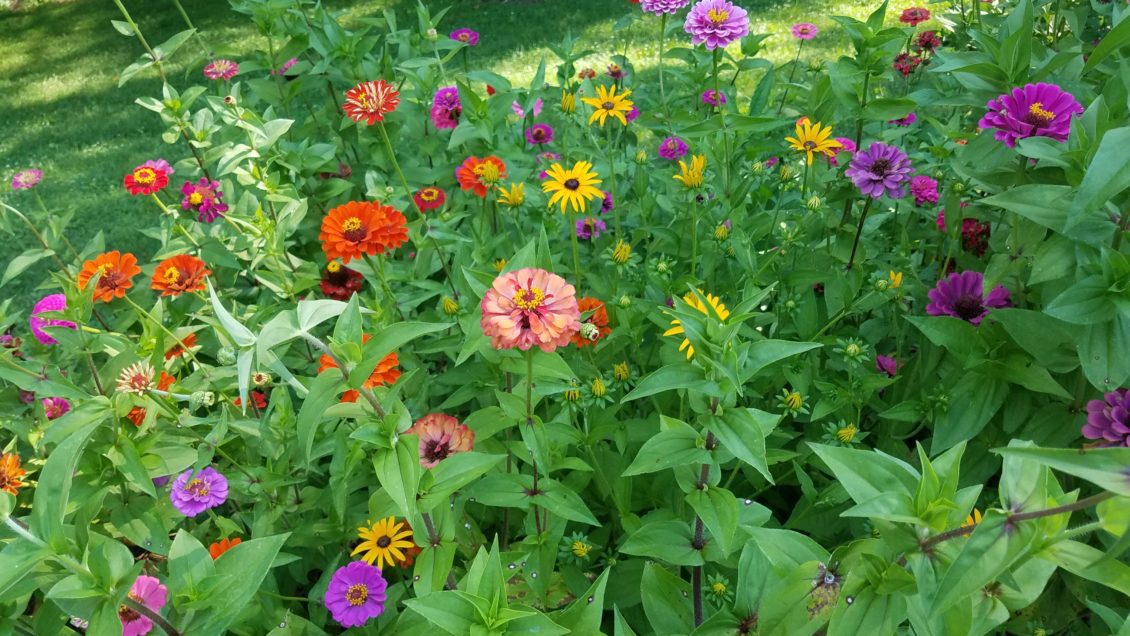Flowers can brighten up any yard, porch or patio and warm weather ushers in the desire to get outside and beautify outdoor spaces. There are several options when it comes to flowers that bloom all season and can be cut for vases or to simply encourage pollinators in your yard.
Where to plant
When choosing your planting location, think about whether you want to do an in-ground bed, pots or planters. Based on your location, you’ll want to determine how much sun the area gets and choose your flowers accordingly. Most flowers need full sun for at least four to six hours a day to flower well, but there are also shade-tolerant species.
What to plant
There are many options when it comes to flowers, but you also want to think about your reason for planting – do you want flowers that bloom all summer to beautify your landscape, do you want a cutting garden or do you want to focus on options that encourage the presence of native pollinators. Based on your desires for the flower garden, you can choose from a variety of flowers to bloom throughout the spring and summer.
Annuals (plants that must be replaced every year) quickly provide more color in the landscape for longer periods of time than other plants and are versatile, sturdy and inexpensive. Options include begonias, coleus, impatiens, marigolds, trailing petunias, vinca and zinnia, to name a few.
Choosing pollinator options will encourage the presence of native pollinators. Pollination is the movement of pollen from the male flower part (anther) to the female flower part (stigma) on the same plant or between two plants of the same species. Proper pollination is critical for the development of many fruits and crops. Approximately one-third of the food that ends up on a plate is there because of pollinators. When pollination is mentioned, most people think of honey bees but there are so many other insects that help get the job done such as native bees, beetles, flies, wasps and butterflies.
Many annuals also attract pollinators, so you can choose flower species to attract pollinators. Warm-season annuals for attracting pollinators include basil and zinnia, as well as spiderflower, cosmos, sunflower and Mexican sunflower. A complete list of annuals for a variety of planting conditions can be found on the HGIC website.

Cutting flowers from your garden encourages more blooms. If not cut, deadheading spent blooms from plants, such as zinnias and marigolds, will be necessary. If left on the plant, flower production slows, and seeds will begin to form.
Flower recommendations for a cutting garden: zinnias, globe amaranth and herbs – basil and mint.
Annuals for Hot, Dry Locations
| African Daisy (Dimorphotheca or Osteospermum) – seed in early spring. | Pentas (Pentas lanceolata) |
| Annual Vinca (Catharanthus roseus) | Pepper (Capsicum annuum) |
| Black-eyed Susan (Rudbeckia hirta) | Silvery Plectranthus (Plectranthus argentatus) |
| Cosmos (Cosmos species) | Snow-on-the-Mountain (Euphorbia marginata) |
| Creeping Zinnia (Sanvitalia procumbens) | Spider Flower (Cleome hasslerana) |
| Dusty Miller (Senecio cineraria) | Strawflower (Bracteantha bracteata) |
| Gaillardia (Gaillardia pulchella) | Summer Snapdragons (Angelonia angustifolia) |
| Globe Amaranth (Gomphrena globosa) | Tickseed (Coreopsis tinctoria) |
| Gold Medallion (Melampodium paludosum) | Trailing Petunia (Calibrachoa x hybridus) |
| Moss Rose or Purslane (Portulaca grandiflora) | Verbena (Verbena species) |
| Mulla Mulla (Ptilotus exaltatus) | Zinnia (Zinnia species) |
How to plant
You can choose growing flowers from seed or purchasing ready-to-plant transplants from your local home and garden store.
If you go the seed route, flowers can be direct-seeded in prepared beds or pots. Most summer annuals can be seeded indoors six to eight weeks before the last frost, if you want to get started early. For ready-to-plant transplants, plant with the top of the roots just under the surface of the soil – be sure to remove paper, fiber and plastic pots before planting, and remove the upper edges of peat pots.
Expert tip: Pinch off any buds and flowers when planting to promote better branching and a strong plant.
Once planting, or transplanting, is complete, water the plants thoroughly. Pay especially close attention to watering the first few weeks while plants develop their root systems. Adequate moisture is essential for the growth of flowering annuals. Most annuals need at least 1 to 1½ inches of water per week from rain or irrigation. More may be needed during very hot weather.
To promote deep root growth, water thoroughly and deeply. Allow the soil surface to dry before watering again. Soaker hoses and drip irrigation are ideal watering methods since they save water and avoid wetting leaves and flowers.
Spring and summer maintenance
Weed control should usually be done by hand-weeding or with the careful use of herbicides. Read and follow label directions before using any herbicide. Do not apply pre-emergence herbicides around newly planted annuals, as these products will stop root growth.
Remove faded flowers before seeds are formed, a practice called deadheading, to keep plants looking attractive and encourage continuous flowering. Heavy pruning can invigorate some species. For instance, petunias can be cut back in midsummer to within a few inches of the ground, fertilized and heavily watered, and they will be full and attractive again in just a few weeks.
For more information and resources on flower gardening, visit the Clemson University Home and Garden Information Center.
Why mulch?
Weed protection.
Mulch flower beds with 2-3-inches of pine bark or pine straw to help conserve soil moisture and reduce weed growth. Mulches shade weed seeds and prevent their germination, eliminating or reducing the need for hand or chemical weed control.
Do not apply pre-emergence herbicides onto the soil immediately after planting. These herbicides work by stopping root development and are likely to harm the new transplants. However, these pre-emergence herbicides may be applied around established (well-rooted) annuals to prevent weed seeds from germinating.

Get in touch and we will connect you with the author or another expert.
Or email us at news@clemson.edu

